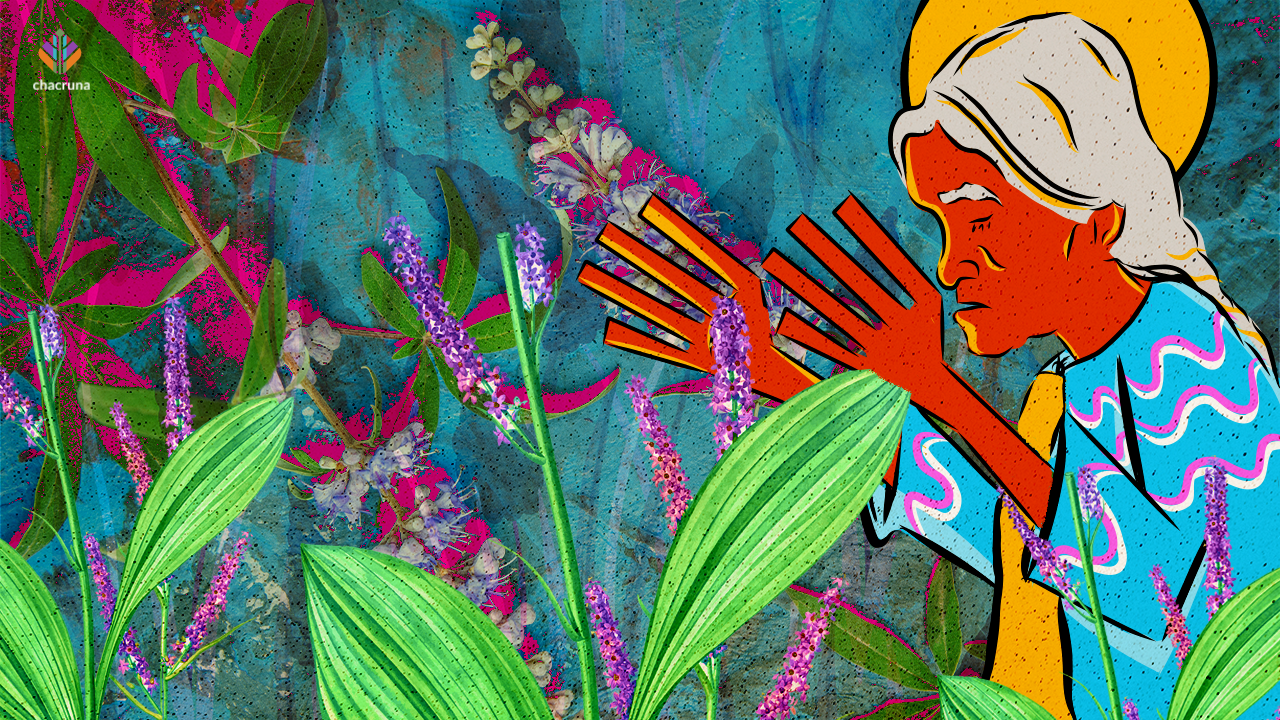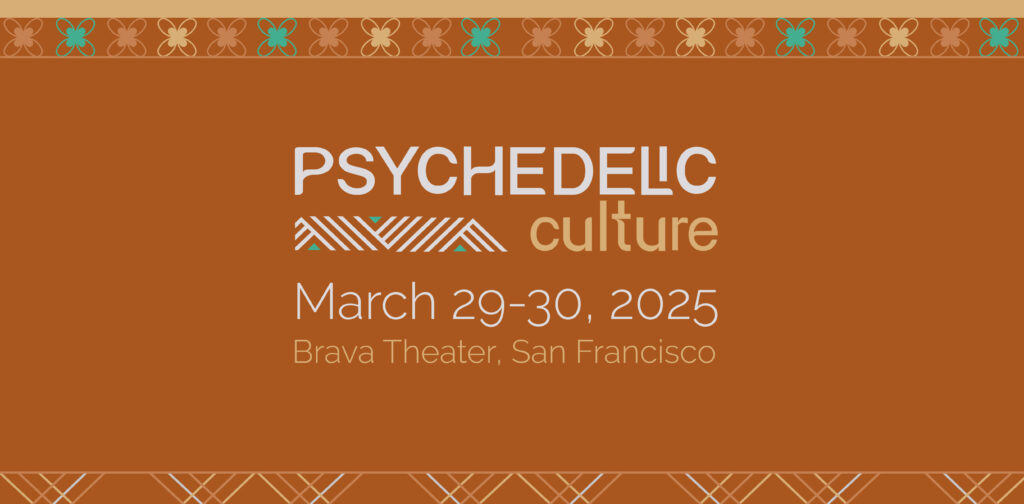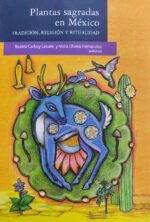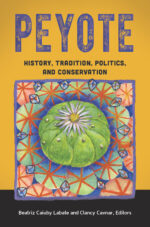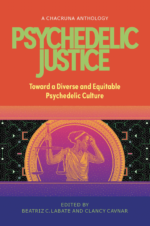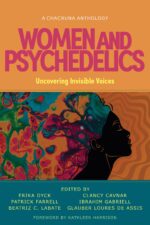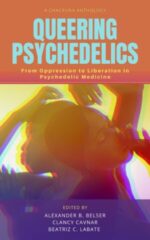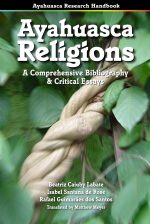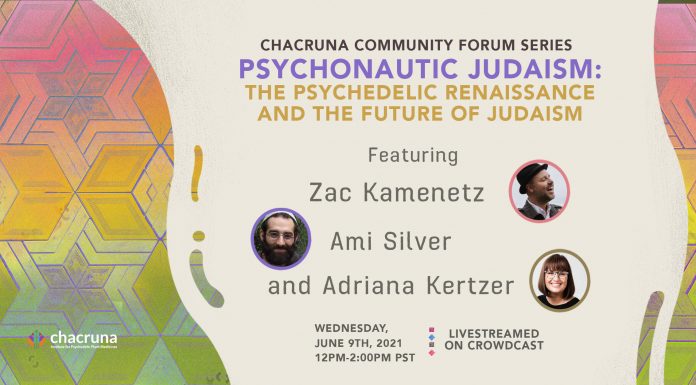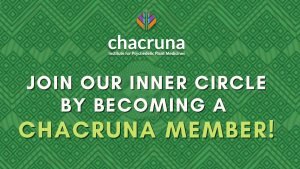- Psychedelics in the Global South: Relevance and Consequences of the Countercultural Movement in Mexico - February 19, 2025
- United Nations on Psychedelics. The World Drug Report 2023 and the Renewed Interest in Psychotropics Substances - August 24, 2023
- Old Uses of Peyote in Traditional Mexican Medicine and its Inclusion in Official Pharmacopeia - July 5, 2023
A Dialogue Between Osiris García and Nidia Olvera
As one of the regions of the world with the most natural psychoactive species and a long history of traditional uses, Mexico has attracted the interest of many scientists, explorers, artists, hippies, pharmaceutical companies, and others. The 1960s were pivotal for the psychedelic movement and, in this dialogue, Osiris García (a Mazatec historian and sociologist) and Nidia Olvera (a Mexican historian and anthropologist) discuss the characteristics and implications of the psychedelic and countercultural movements in Mexico, particularly in the Mazatec region. This conversation also contributes to the current debate on the psychedelic renaissance and how, although a phenomenon largely constructed in the Global North, its impacts have also permeated the Global South.
Nidia Olvera (NO). A first point I wish to critique about the psychedelic movement is its tendency to homogenize the huge diversity of Indigenous peoples and essentialize their cultures. In the case of the Mazatec people, it’s as though everything revolves around mushrooms. Could you mention some of the main characteristics of Mazatec culture [Chjota Én Nima]?
Osiris García (OG). The Mazatec language continues to be safeguarded and is deeply embedded in traditions because, more than a language of mere words, it is also a symbolic language, much used in festivities and ceremonies. This is despite the fact that, during the formation of the post-revolutionary Mexican state, indigenist policies prioritized national integration and the use of Spanish. Another enduring element is celebration of the Day of the Dead, one of the biggest festivals of the Mazatec people, along with celebrations of particular saints. There is also a strong connection with nature and various rituals performed to heal the earth before planting. Coffee is typical of the Mazatec region; when you arrive at someone’s house, you’ll frequently be offered coffee with bread. The reasons are historical, tracing back to the introduction of capitalist agriculture by the Porfirian government in the nineteenth century, which promoted certain crops. A new peasant agricultural class emerged as a result, along with social stratification, while communication with the Mazatec area and its inhabitants became easier. Coffee later became part of the traditional products too. Something else very characteristic of the Mazatec people, both historically and in the present, is the huge range of conflicts—over land, water, and political disputes. In other words, both tragedy and festivities serve as points where the Mazatec people come together.
NO. So, we could say that the introduction of coffee growing led to an increase in the global connections of the Mazatec region and its people. This made it easier for traders to enter the area, along with institutions like the Summer Institute of Linguistics, and of course, various researchers, including Gordon Wasson. Could you tell us something about the different opinions within the Mazatec community concerning the arrival of Wasson and other foreigners, as well as the transformations over the subsequent years?
OG. Yes, with the coffee trade, merchants arrived from various European countries, preceded by explorers and the Summer Institute of Linguistics. Among them were some anthropologists who began documenting ritual and religious practices—including those involving mushrooms. This information eventually reached Wasson, an American fungi enthusiast who decided to visit Mexico in search of magic mushrooms. From the Mazatec perspective, especially in Huautla, Wasson is a name we’ve heard since childhood. It’s a name heavily marked in both the history and the rumors of the Mazatec people. The most common thing is to blame the arrival of foreigners for prostituting the mushrooms and ceremonies, for the hippies wandering around naked, and for the rise of alcoholism and marijuana use. As we’ve already seen, though, this is part of a much longer historical process, stretching back to the Conquest. The same applies to María Sabina—she’s been blamed for giving the mushrooms to foreigners but making those kinds of value judgments about her overlooks social, cultural, and political factors. Today, Sabina is being reclaimed as an icon of ancestral medicine, though I’m not sure if that’s the right way to see these events either. It’s a much more complex process.
Join us for Psychedelic Culture, March 29-30 2025, San Francisco
NO. How do people view María Sabina in Huautla de Jiménez? Has she also become an icon for the Mazatec people?
OG. Yes, she’s also an icon in Huautla, which is a tourist, economic, and political hub of the region. And because the town has been urbanizing rapidly, it needs these elements to keep feeding its own narrative. I think that’s legitimate as these symbols are also a means of survival for many people in a place where economic hardship and job scarcity are constant. She has also become an icon for other social groups like hippies, psychonauts, researchers, and part of the psychedelic movement. María Sabina has now turned into an image, a word, a capitalizable and marketable element, and she’s also a point of convergence capable of generating social connections.
NO. In his 1957 article, Wasson described some elements of the ceremony he witnessed, in which the mushrooms were purified with copal incense smoke, while prayers and incantations were proffered in front of a table converted into an altar set with candles and adorned with Catholic images. Do you think that the ritual practices or uses of mushrooms have changed over time?
OG. Cultures and their traditions are dynamic and ever-changing; it’s very probable that today’s ceremonies aren’t the same as those Wasson witnessed. We have to consider that many Chjines make use of Catholic elements like saints and holy water and sing Catholic hymns in the Mazatec language. There are also reportedly people who no longer speak Mazatec and conduct ceremonies with mushrooms, now incorporating other concepts like chakras. The objectives in using the mushrooms have also transformed. Westerners arrive in the Mazatec territory bringing their Western problems, like anxiety, depression, and PTSD, and what the sage says is that they are sick with sadness, due to losing a family member or other causes. However, in the Mazatec community, people are deeply committed to preserving this tradition. We’re talking about an entire spiritual system in which the mushroom doesn’t exist on its own: there’s a variety of spiritual, symbolic, and ritual elements that come together with a specific purpose, like healing or solving a problem. We never talk about the mushroom in isolation—we would be falling short if we did so—because it’s a highly complex system in which the question of nature interacts with rain, thunder, mountains, and the spiritual world.
Nowadays, with the psychedelic movement and the influence of psychiatry, all the focus is on the mushroom and the other elements are being ignored. Maybe it’s a very Western way of thinking, of just taking something, a kind of reification. The mushroom is what connects you, but what emerges from that is an entire spiritual process.
The mushroom is what connects you, but what emerges from that is an entire spiritual process.
Osiris García
I also want to mention the mushroom species. In the Mazatec highlands, four main species are used: the “cane mushroom,” or Ndi ndajai, is the strongest—it grows in sugarcane bagasse, hence its name. Then there’s Ndi kixo, or “the landslide,” which is also strong. These mushrooms grow where leaves and logs are decomposing, in humid areas left by collapsed hillsides. Next is Ndi nraja, or San Isidro, which is more common. These grow in pastures and people wander around looking for them in cow dung during the rainy season. Finally, there are “the little birds,” or Ndi nise, which are tiny little things, very soft and light.
NO. Could you talk about other psychoactive plants used in the Mazatec area, both the endemic plants and the foreign ones?
OG. Salvia Divinorum, which is known as hierba de la pastora, “the shepherdess’s herb,” is ritually prepared by women. They harvest it in pairs and grind it in pairs, and what’s left is what you consume. They have their own cultural, ritual, and sacred rules. The women say that when they consume it, a virgin or a woman appears to them and tells them how to heal the person. The plant is more endemic in the midaltitude and lowland Mazatec regions due to the climate, but it’s also consumed in the highlands, where they plant it in their small plots because it grows so quickly. As for the seeds of the virgin or ololiuhqui, I can tell you an anecdote about an uncle who performed a ceremony with these seeds involving a sage from San Mateo. The uncle went to see her because he had a severe gastric problem that wasn’t clearing up and he could feel how his stomach, all his intestines, and his entire digestive system were sensitive, so he vomited all these foods that were causing him harm. During a nighttime ceremony, he clearly saw himself expelling all the harmful foods and identified what they were, but, in reality, it was pitch dark and the only thing he expelled was air. The healer told him “You already know which foods are harming you” and then came all the advice and scolding.
As for cannabis, more commonly known as mota or marijuana, there are still people who shy away from it. Some people accept mushrooms and healing, but don’t openly accept the use of marijuana because, in their world, it is not part of tradition and is not seen to heal. Although it has some presence in the area, it is consumed more by young people for recreational purposes, as well as foreigners who come here. It also has a point of connection between young people.
NO. To wrap up, I’d like to discuss the present, particularly the psychedelic renaissance, including the medicalization and decriminalization of psychoactive plants and mushrooms. How is this viewed in Huautla de Jiménez? And what implications might it have for the Mazatec communities?
OG. I think that the global psychedelic movement and its resurgence—because it comes in waves, they call it a renaissance, but it has also had various declines and rebounds—is a process with different rhythms. I’ve been trying to understand the psychedelic movement, both in the past and today. But this doesn’t mean that just because we’re from Huautla, we’re interested in this renaissance. It’s a mistake within the global psychedelic movement to believe that all Indigenous people know about or are interested in this psychedelic resurgence. In fact, not all Mazatec people consume mushrooms. As Indigenous people, natives of these territories, we have our own long-standing histories, much older than the psychedelic movement.
As Indigenous people, natives of these territories, we have our own long-standing histories, much older than the psychedelic movement.
Osiris García
As for the proposals for decriminalization and legalization, they’re also about seeking economic benefits for pharmaceutical companies, designing psychotherapies for white elites, and to treat Western ailments. The view taken by many Westerners is purely about commercialization, under the guise of a spiritual narrative, which in a very orthodox Marxist context would be the idea of the economic system determining the superstructure—that is, the economic system shapes your way of thinking and how you relate to others. Additionally, in Mexico, recent proposals to reform the law have focused on the decriminalization, reclassification and legalization of psilocybin mushrooms. People have spoken in the name of Indigenous peoples, in the name of their rituals, history and needs, without consulting us and without studying Mexico’s reality, much less the historical processes of Indigenous groups and their communities. We don’t wish to interfere with their rituals, we respect them. We want psilocybin, the substance, and our position is very clear: We say it’s legitimate and fine. It’s like trying to standardize any another medication. Everyone can use psychedelics in their own way. However, the sensationalism and narratives laden with spirituality and “Indigenous” elements in various groups of the psychedelic movement have adverse effects on the ritual practices of true Indigenous peoples with their entheogens.

Discover the Indigenous Reciprocity Initiative of the Americas
NO. Which are these adverse effects?
OG. For example, the expansion of psychedelic tourism can weaken community ties and encourage competition between members of a community. It is true that this means greater profits for a family, but this commercial dynamic does not allow the strengthening of Indigenous autonomies; on the contrary, it exacerbates the historical problems within the territories. Certainly, many Indigenous healers and shamans (words used in a general and broad sense), believe people everywhere need healing, but this narrative is being exploited by non-Indigenous people for their own economic benefits. Cultural appropriation by non-Indigenous people who pretend to be healers or shamans, who deliberately use different entheogens and invest their “practices” with “spiritual” narratives in which they incorporate a wide variety of symbolic elements taken from different Indigenous traditions are problematic. People in Western societies ignore the cultural dynamics under which Indigenous peoples live and coexist with the natural and spiritual elements that guide their relationship with psychedelics.
NO. How do you say thank you in Mazatec?
OG. Naxkatichji!
Art by Mulinga.

Shop our Collection of Psychedelic T-Shirts
Take a minute to browse our stock:
Did you enjoy reading this article?
Please support Chacruna's work by donating to us. We are an independent organization and we offer free education and advocacy for psychedelic plant medicines. We are a team of dedicated volunteers!
Can you help Chacruna advance cultural understanding around these substances?


